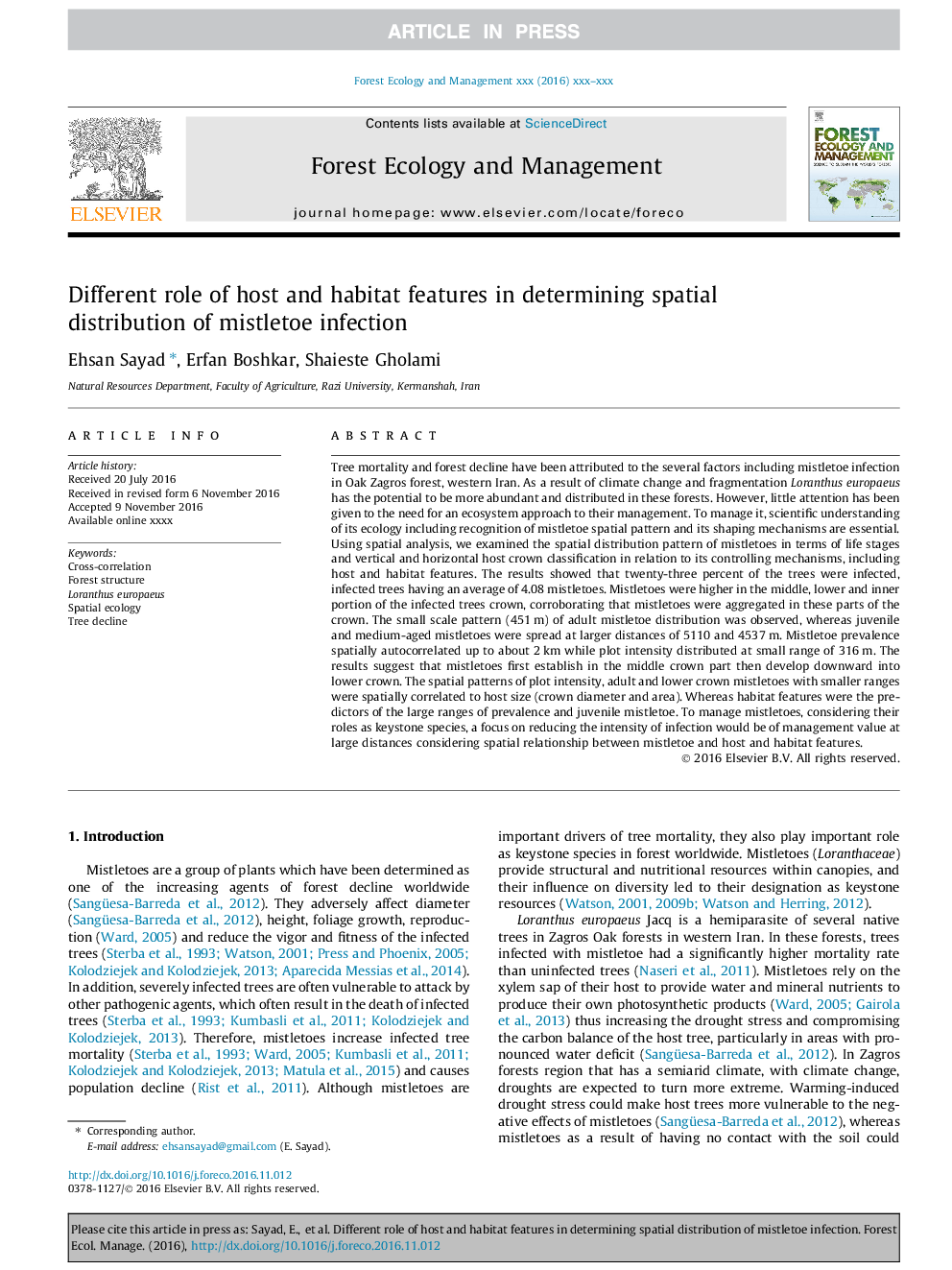| کد مقاله | کد نشریه | سال انتشار | مقاله انگلیسی | نسخه تمام متن |
|---|---|---|---|---|
| 4759634 | 1421374 | 2017 | 8 صفحه PDF | دانلود رایگان |
عنوان انگلیسی مقاله ISI
Different role of host and habitat features in determining spatial distribution of mistletoe infection
ترجمه فارسی عنوان
نقش متفاوتی از ویژگی های میزبان و زیستگاه در تعیین توزیع فضایی علف های هرز
دانلود مقاله + سفارش ترجمه
دانلود مقاله ISI انگلیسی
رایگان برای ایرانیان
کلمات کلیدی
موضوعات مرتبط
علوم زیستی و بیوفناوری
علوم کشاورزی و بیولوژیک
بوم شناسی، تکامل، رفتار و سامانه شناسی
چکیده انگلیسی
Tree mortality and forest decline have been attributed to the several factors including mistletoe infection in Oak Zagros forest, western Iran. As a result of climate change and fragmentation Loranthus europaeus has the potential to be more abundant and distributed in these forests. However, little attention has been given to the need for an ecosystem approach to their management. To manage it, scientific understanding of its ecology including recognition of mistletoe spatial pattern and its shaping mechanisms are essential. Using spatial analysis, we examined the spatial distribution pattern of mistletoes in terms of life stages and vertical and horizontal host crown classification in relation to its controlling mechanisms, including host and habitat features. The results showed that twenty-three percent of the trees were infected, infected trees having an average of 4.08Â mistletoes. Mistletoes were higher in the middle, lower and inner portion of the infected trees crown, corroborating that mistletoes were aggregated in these parts of the crown. The small scale pattern (451Â m) of adult mistletoe distribution was observed, whereas juvenile and medium-aged mistletoes were spread at larger distances of 5110 and 4537Â m. Mistletoe prevalence spatially autocorrelated up to about 2Â km while plot intensity distributed at small range of 316Â m. The results suggest that mistletoes first establish in the middle crown part then develop downward into lower crown. The spatial patterns of plot intensity, adult and lower crown mistletoes with smaller ranges were spatially correlated to host size (crown diameter and area). Whereas habitat features were the predictors of the large ranges of prevalence and juvenile mistletoe. To manage mistletoes, considering their roles as keystone species, a focus on reducing the intensity of infection would be of management value at large distances considering spatial relationship between mistletoe and host and habitat features.
ناشر
Database: Elsevier - ScienceDirect (ساینس دایرکت)
Journal: Forest Ecology and Management - Volume 384, 15 January 2017, Pages 323-330
Journal: Forest Ecology and Management - Volume 384, 15 January 2017, Pages 323-330
نویسندگان
Ehsan Sayad, Erfan Boshkar, Shaieste Gholami,
